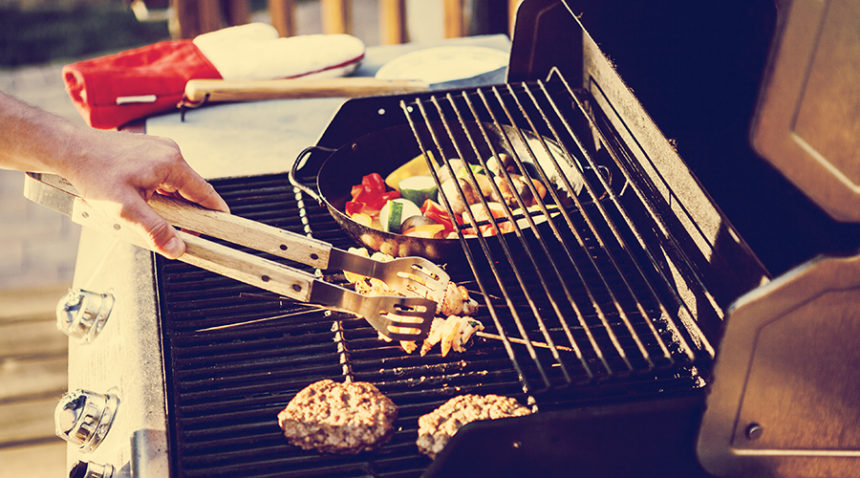When summer winds come blowing in, you can bet the aroma of grilling will be in the air. According to the Hearth, Patio & Barbecue Association, three out of four households own grills. Ensure your backyard barbecues are safe for your family and friends by sparking your knowledge about food and grill safety.
Make sure frozen meat, poultry or seafood is thawed before grilling so that it cooks evenly. The refrigerator works best for slow, safe defrosting. You may also place sealed packages of frozen meat in cold water to thaw. Never defrost meat at room temperature, as this can promote bacteria growth and foodborne illness.
Marinades can boost the flavor of meat and help keep it moist. You can marinate meat for several hours or a day or two in the refrigerator. As with defrosting, the kitchen counter is no place to marinate meat. If you plan to use a portion of the marinade for cooked food, make sure to boil the marinade for at least three minutes to kill any bacteria.
Marinade bonus: Not only can marinades enhance flavor, they may provide health benefits. Marinating meats before grilling may reduce cancer-causing substances that occur when meat is charred over high heat. In addition, some marinades contain antioxidants and vitamins that may offer protection against heart disease and cell and tissue damage.
Scrub the grilling surface with a wire grill brush to remove any charred food. Have plenty of clean grilling utensils and platters on hand, and prevent the spread of harmful bacteria by using different platters and utensils for raw meat and cooked meat. Thoroughly wash your hands with warm, soapy water after handling raw meat.
Instruct children to stay away from the grill, and keep pets away from the grilling area. Set up your barbecuing station in a well-ventilated area and only use approved fire starters with a charcoal grill. Let the starter fluid burn off before putting food on the grill, and keep a squirt bottle of water nearby to douse any flare-ups. When heating up the grill and flipping food, wear flameproof mitts and use cooking utensils with long handles.
Heat meat to a safe internal temperature to kill bacteria. Use a food thermometer and place it in the deepest part of the meat to determine if it’s done (see chart). Turn meat at least once during the cooking process, and make sure it is no longer pink inside.
When food has reached a safe temperature, remove the meat with clean tongs and place it on a clean platter. Serve food as soon as possible after cooking. In hot weather, food should never sit out for more than one hour. Immediately refrigerate any leftovers in shallow containers.
Now you’re ready to make grilling season a breeze! By following these health and safety tips, you’ll know your grill has the sweet smell of success.
Ready to Serve?
| Food | Cook to at least… |
| Whole poultry and thighs | 180°F |
| Poultry breasts | 170°F |
| Ground poultry | 165°F |
| Pork (all cuts), ground beef hamburgers | 165°F |
| Beef, veal, lamb steaks, roasts and chops, fish and seafood | 145°F |

